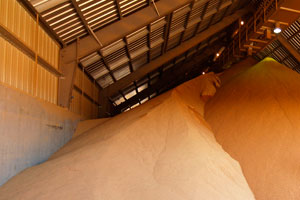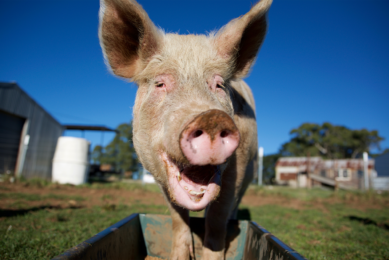Top tips on sampling and monitering your grain

With harvest a long-distant memory and all the grain safely in the shed, the attention switches to managing and selling the stored crop growers have worked so hard to produce over the year.
An essential part of managing and selling grain is knowing the quality which relies on accurate sampling. This helps avoid deductions as growers know if each load passes or fails the required specifications.
“For growers, knowing the quality of your grain is essential so that you can store it then sell it effectively,” says HGCA chairman, Jonathan Tipples. “This means you can get the best return for your work.”
But last year’s low specific weights and resulting deductions together with discrepancies between on-farm sample sand samples taken at the intake has put sampling accuracy back under the spotlight.
NFU’s chief crop advisor Guy Gagen, says improving on-farm sampling can really pay dividends, giving growers a better understanding of what is in their store and giving confidence in challenging any claims against them.
“It helps avoid any unexpected results and limit the resulting claims by resolving any apparent discrepancies early on,” he says.
New guide
This is why the HGCA is launching a new grain sampling guide at the UK Grain Event next month. It outlines the basics of good grain sampling from harvest, through to sale and final dispatch.
The new guide highlights four key points for sampling grain. The first is to know the harvested quality so that growers can dry and cool the grain as necessary and identify potential buyers.
Protecting the harvested quality is the second stage. Stored well, grain quality should not deteriorate, but store managers need to be on the look-out for any early signs of spoilage or infestation.
Third, when grain leaves the farm, it is important to get a sample of what is loaded onto the lorry. This provides a record of what has been sold and can show that the grain meets specifications.
In addition, farm assurance schemes often require this type of sample to be retained to ensure traceability in the supply chain.
The final stage for sampling is at commercial intake where buyers use automated equipment to take samples from lorries as they come in. These samples are used to confirm that the grain meets the specification and also to inform decisions about further processing according to the guide.
Top tips on the sampling process
1) Getting a representative sample
A sampling programme involves taking a number of small incremental samples from across different points of the heap to give more representative picture of the grain.
These incremental samples need to be thoroughly mixed together to form an aggregate sample. For a 30t lorry-load of grain, take at least 10 samples of 200g, as the grain is loaded. This will provide a 2kg aggregate sample.
To find out more tips, please visit FWI.











